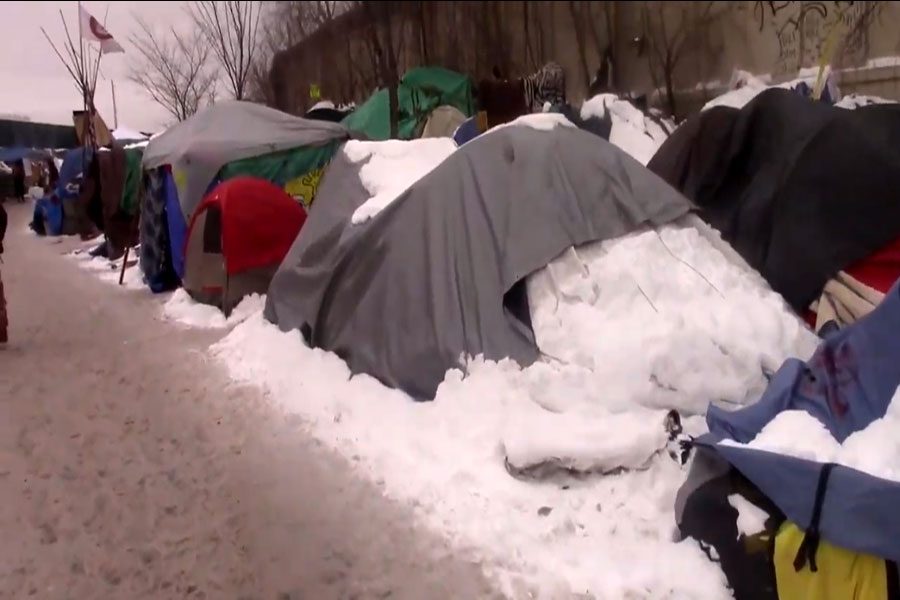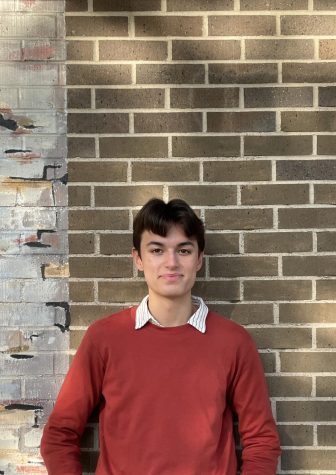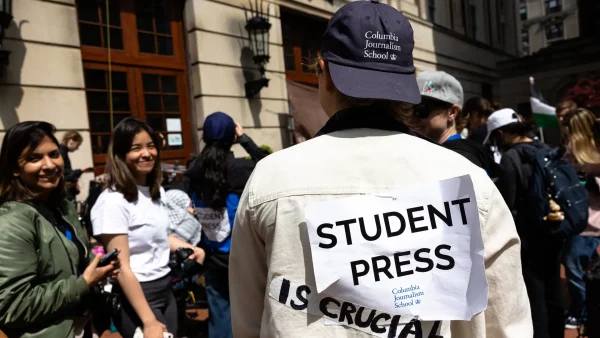‘Voices’ showcased its latest work of six documentary films
February 21, 2019
The students from the class Voices showcased their latest work last Tuesday night. The result? Six creative films, varying from the topics of the Minneapolis homeless encampment ‘tent city’ to the history of censorship of youth speech.
The class has two big projects due at the end of each quarter: a podcast project and a documentary project. These two projects were completed just before the first semester ended, about a month ago now.
This senior only class taught by English teachers Laura Lanik and Delania Haug, helps students express creativity and become more independent. The purpose of the documentary films are “to address a social justice issue in the community,” said Voices student Dylan Halberg.
The event drew in a lot of attention from South High students, parents, and teachers; as there were a good handful of each that showed up. “I’ve gone to a lot of these Voices documentary pieces,” said former South High Project Success facilitator, Marc Bromaghim-Oropeza, “I’m someone who believes in hearing student thought, voice, and art… [Each documentary] spoke to… a certain part of me that I know about and care about.”
Halberg worked with Hussein Aden and Shamsedin Abdi on the documentary about tent city. Halberg explains that, “[The documentary is] about the [Native-American] historical trauma that affects tent city, and the main reasons of [Native-American] homelessness… It digs into the main causes of it and what people can do to help.”
Sean Powell-Burns and Sheyenne Atheneos created a documentary that looked into how Native-Americans have been poorly represented the history of the film industry. The film dived into how Native-American people are depicted stereotypically and inaccurately in the media to this day.
The students were responsible for conducting research, getting interviews, finding footage, and editing. Halberg explained that he got several interviews with Native-American people who had something to say about the topic of tent city. “We interviewed elders, we interviewed a teacher, and interviewed the founder of Natives Against Heroin,” Halberg said.
Many of the students encountered challenges with the editing process and the creation process. “The editing was grueling,” said Powell-Burns, “I think it’s especially difficult with multiple people, bec
ause you can’t edit at the same time, and you want to have an equal [distribution of work], so it ends up being kind of frustrating and conflicting.”
“We started out with only one interview,” said Halberg, “[Then] we were really stuck on that one interview, so I just kept on trying to edit and edit.”
However, despite the heavy amount of difficult work, both classmates were happy with the end result. “It wasn’t like I had a preconceived idea of what it was going to turn out like, but I like how it turned out a lot,” said Powell-Burns.
“It was like a puzzle piece. Everything was clearer and it all just fell together,” said Halberg.
One of the biggest takeaways Powell-Burns got from the project was, “Learning about the topic [of Native-American media representation]. In my case learning about another culture really inspired me to learn more after the film [was finished].”
Overall, the six films shown covered their topics very well and each one had fantastic interviews. They all covered something important to the creators’ communities. “I loved seeing the finished project, seeing it come together, seeing it become a great film,” said Halberg.
If you are interested in viewing the other documentaries created by the students in VOICES you can go to the YouTube channel “VOICES” (http://m.youtube.com/user/SouthHighVOICES)







